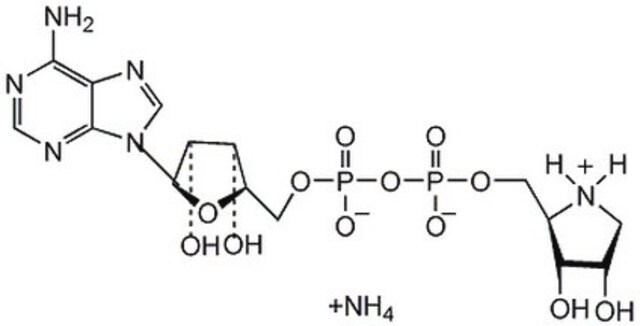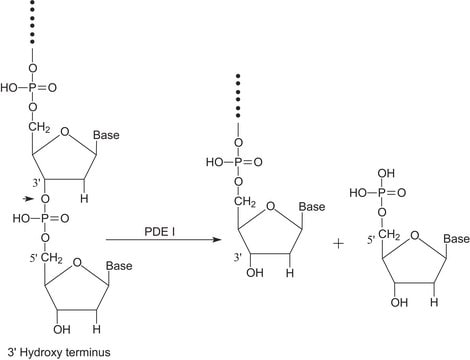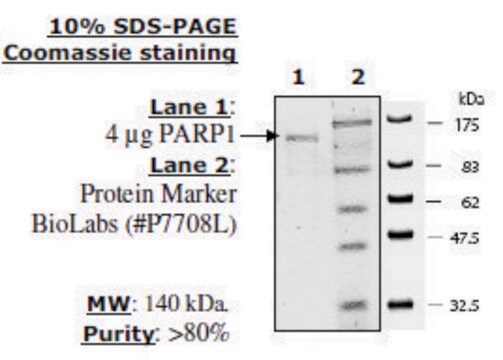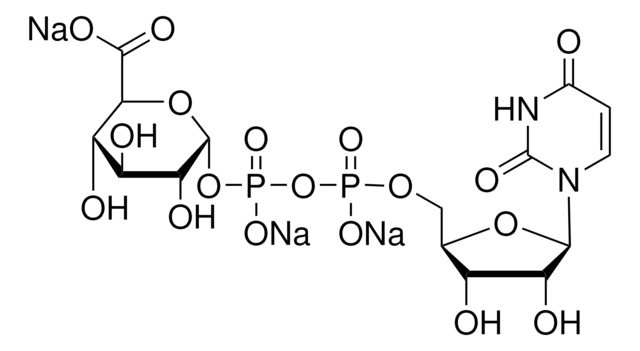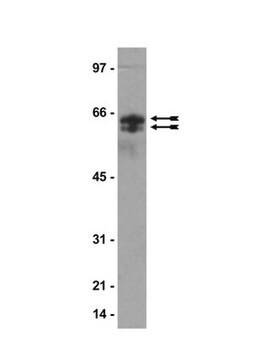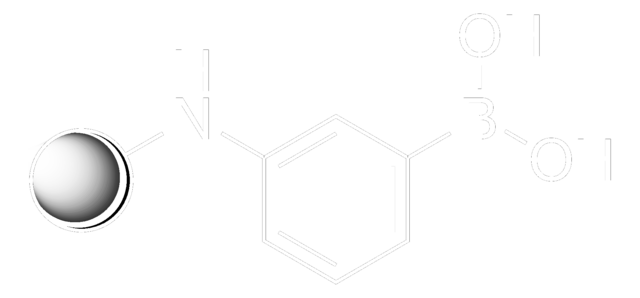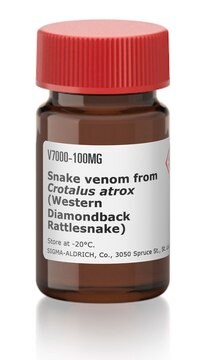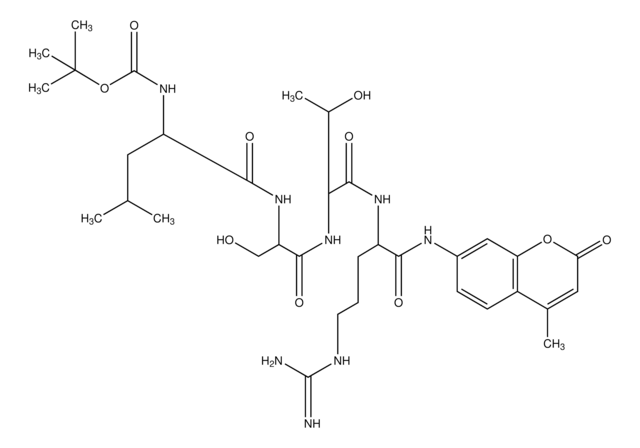SRP8023
PARG human
recombinant, expressed in Sf21 cells, His tagged, >95% (SDS-PAGE)
Sinonimo/i:
FNDC5 (cleaved), Poly(ADP-ribose) glycohydrolase
About This Item
Prodotti consigliati
Origine biologica
human
Ricombinante
expressed in Sf21 cells
Tag
His tagged
Saggio
>95% (SDS-PAGE)
Forma fisica
liquid
PM
~110 kDa by SDS-PAGE
Confezionamento
pkg of 2 μg
Concentrazione
≥0.2 mg/mL
tecniche
cell based assay: suitable
Colore
clear
Solubilità
water: soluble
N° accesso UniProt
Condizioni di spedizione
dry ice
Temperatura di conservazione
−70°C
Informazioni sul gene
human ... PARG(8505)
Descrizione generale
Applicazioni
Azioni biochim/fisiol
Stato fisico
Altre note
Avvertenze
Danger
Indicazioni di pericolo
Consigli di prudenza
Classi di pericolo
Repr. 1B
Codice della classe di stoccaggio
6.1D - Non-combustible acute toxic Cat.3 / toxic hazardous materials or hazardous materials causing chronic effects
Classe di pericolosità dell'acqua (WGK)
WGK 1
Punto d’infiammabilità (°F)
Not applicable
Punto d’infiammabilità (°C)
Not applicable
Certificati d'analisi (COA)
Cerca il Certificati d'analisi (COA) digitando il numero di lotto/batch corrispondente. I numeri di lotto o di batch sono stampati sull'etichetta dei prodotti dopo la parola ‘Lotto’ o ‘Batch’.
Possiedi già questo prodotto?
I documenti relativi ai prodotti acquistati recentemente sono disponibili nell’Archivio dei documenti.
Il team dei nostri ricercatori vanta grande esperienza in tutte le aree della ricerca quali Life Science, scienza dei materiali, sintesi chimica, cromatografia, discipline analitiche, ecc..
Contatta l'Assistenza Tecnica.